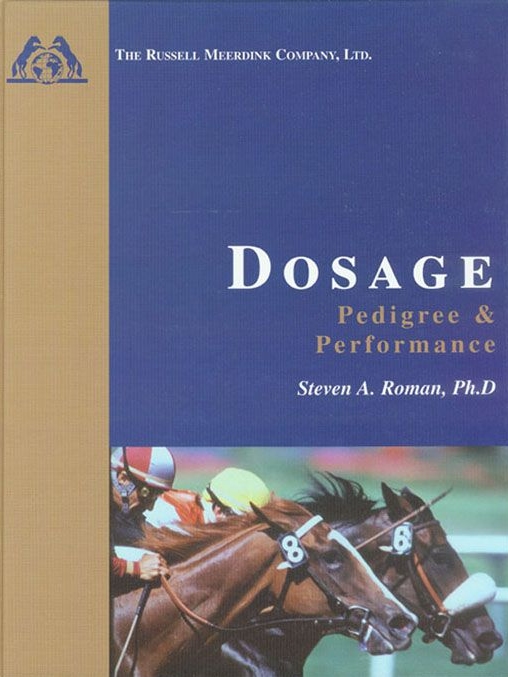 | Steven A. Roman Dosage Pedigree and Performance Publisher: The Russell Meerdink Company Ltd. (16 Nov. 2011) Language: English |
| Generation | Points |
| 1st | 16 | 2nd | 8 | 3rd | 4 | 4th | 2 |
| Brilliant | Intermediate | Classic | Solid | Professional |
| Speed | <------------------------> | Stamina | ||
| B | I | C | S | P | DI | CD | |
| Jon George | 16 | 5 | 5 | 0 | 0 | 9.40 | 1.42 |
| Minster Glory | 7 | 1 | 11 | 2 | 11 | 0.74 | -0.2812 |
| CD | = | [(B x 2) + I] | - | [S + (P x 2)] |
| total points | ||||
|
Where: B = Brilliant points I = Intermediate points S = Solid points P = Professional points | ||||
| B | I | C | S | P |
| +2 | +1 | 0 | -1 | -2 |
| Dist(f) | 4 | 5 | 6 | 7 | 8 | 9 | 10 | 11 | 12 | 13 | 14 | 15 | 16 | 17 | 18+ |
| CD | +2 | +1 | 0 | -1 | -2 | ||||||||||
| B | I | C | S | P | |||||||||||